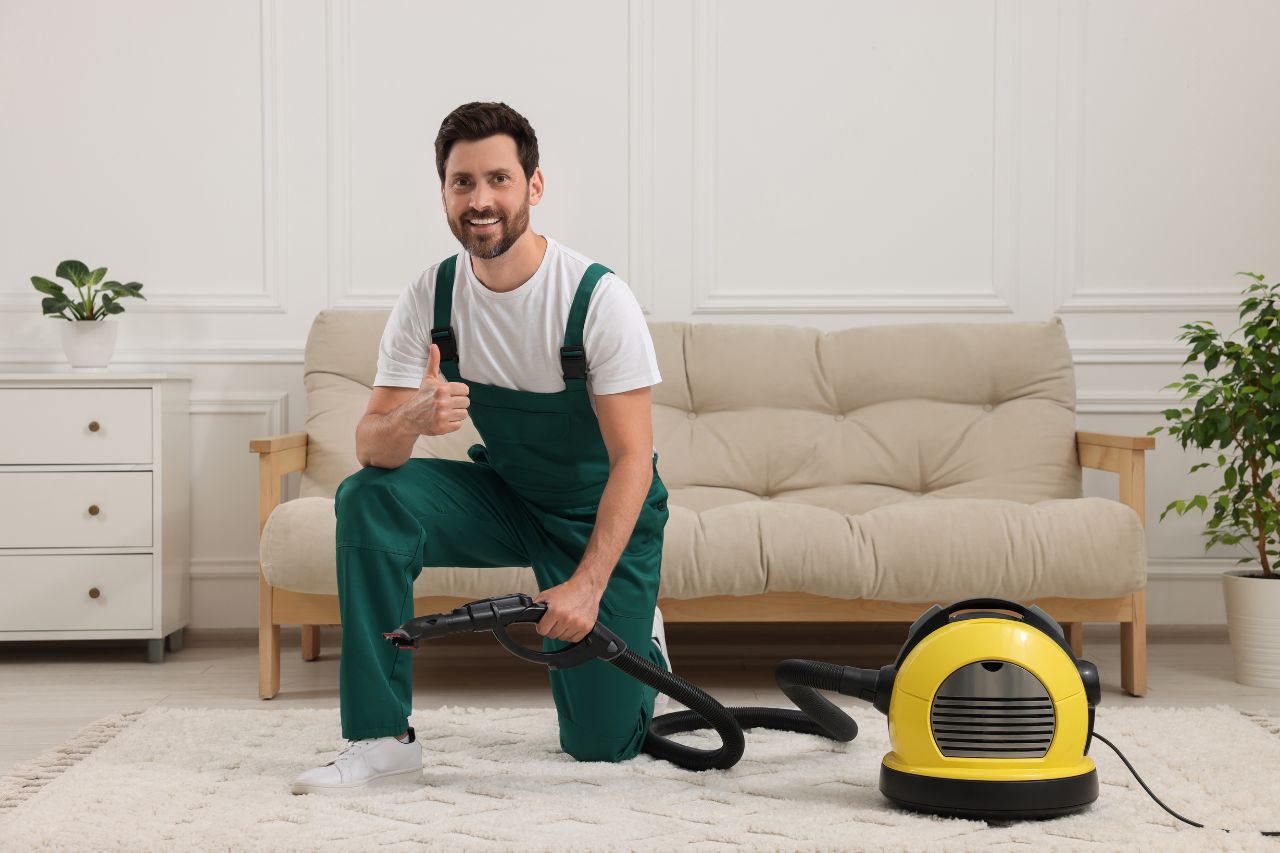Carpet cleaning breathes new life into your home, reviving the softness, beauty, and freshness of your floors. But once cleaning is done, most homeowners face the critical waiting game—how long does carpet take to dry after cleaning? In humid Savannah, GA, understanding what impacts drying times and how to speed up the process helps protect your carpet and home from damage, mold, and unpleasant odors. Sani-Kleen, a trusted local carpet cleaning company with over 20 years of service, provides this comprehensive guide on drying times, factors involved, practical tips, and mistakes to avoid—ensuring your carpets dry thoroughly and swiftly.
Why Drying Time Matters After Carpet Cleaning
While a professional deep clean removes dirt, stains, allergens, and odors at a deep level, it also saturates fibers and the carpet padding underneath with water and cleaning solutions. Proper drying is essential because:
- Prolonged moisture can lead to mold and mildew growth causing health hazards and foul smells
- Wet carpets risk damage like fiber weakening or backing deterioration
- Damp carpets attract dirt more quickly if walked on prematurely
- Quick drying restores comfort and usability of living spaces
How Long Do Carpets Typically Take to Dry?
The drying time depends on factors including cleaning method, environmental conditions, and carpet composition. In general:
- Steam or hot water extraction cleaning carpets dry between 6 to 12 hours in ideal conditions
- Typical drying extends to 24 hours or more with high humidity, poor ventilation, or thick carpets
- Low moisture or dry carpet cleaning methods often dry in 1 to 2 hours
- DIY methods may take longer due to less efficient water removal
Sani-Kleen uses commercial-grade, advanced equipment to extract majority of water during cleaning, significantly reducing your drying time.
Factors Influencing Carpet Drying Time in Savannah
Understanding these factors helps set expectations and informs drying strategies:
- Climate and Humidity
Savannah’s coastal and humid climate slows drying by keeping moisture in the air, impeding evaporation from carpet fibers. - Airflow and Ventilation
Open windows and use of fans improve evaporation by moving moist air away from carpets and circulating drier fresh air. - Carpet Material and Thickness
Denser carpet fibers and padded backings hold more water, increasing drying time. Synthetic carpets usually dry faster than natural fibers like wool. - Water Used in Cleaning
More water used (especially in DIY or old equipment) extends drying. Professionals like Sani-Kleen limit excess water to speed drying. - Room Temperature
Warm temperatures help moisture evaporate faster. Using HVAC systems or portable heaters can assist in regulating room temperature optimally. - Furniture and Padding
Heavy furniture prevents air circulation around carpeted areas. Padding absorbs water and lengthens drying time under carpets.
Best Practices to Speed Up Carpet Drying After Cleaning
- Optimize Airflow
Open doors and windows to create cross-ventilation where possible. Position fans strategically to move air across and beneath carpets. - Use Air Movers or Carpet Dryers
Specialized carpet dryers or high-velocity fans used by professionals rapidly move air close to carpet surfaces, reducing evaporation times significantly. - Deploy Dehumidifiers
Removing moisture from indoor air lowers ambient humidity, accelerating carpet drying and reducing risks of mold. - Control Home Temperature
Maintain a comfortable, moderate warmth with your heating or cooling system. Avoid extreme heat or drying too quickly which can damage fibers. - Avoid Foot Traffic and Replace Furniture Cautiously
Limit walking on wet carpets to prevent fiber damage and soiling. Use furniture coasters or move items temporarily to allow airflow. - Use Wet/Dry Vacuums for Excess Moisture
Extract any remaining surface water with wet-dry vacuums or absorbent towels for faster initial drying. - Remove Rugs and Mats
Take small rugs or door mats outside to air dry separately, exposing underlying carpet fully.
Common Mistakes to Avoid That Prolong Drying
- Keeping windows and doors closed and rooms poorly ventilated
- Walking on wet carpet prematurely or placing furniture back too soon
- Soaking carpets with excessive water in non-professional cleaning
- Ignoring humidity control indoors during drying phase
Signs Carpet Is Still Wet
- Dampness that can be felt by touch
- Musty or sour odors indicating microbial growth
- Visible moisture or staining on padding or carpet edges
Benefits of Professional Carpet Cleaning With Efficient Drying
Sani-Kleen offers comprehensive deep cleaning with efficient water extraction designed for Savannah’s climate:
- Commercial-grade equipment removes maximum moisture
- Customized cleaning protocols match carpet type and condition
- Expert technicians advise on optimal drying strategies
- Eco-friendly cleaning products safe for pets and families
- Transparent pricing with satisfaction guarantee
FAQs About Carpet Drying Times
How long before I can safely walk on my carpet after cleaning?
Typically 6 to 12 hours for normal foot traffic. Waiting until the carpet feels completely dry prevents crushing fibers or embedding dirt.
Can I open windows at night to help dry my carpet?
Yes, provided humidity is low and no rain is expected. Night ventilation can speed drying but close windows if outdoor moisture is high.
Is professional carpet cleaning quicker to dry than DIY?
Yes, professionals use powerful extraction machines that remove most water, plus drying equipment and expertise to accelerate drying and minimize soaking.
Proper drying after carpet cleaning is equally vital as the cleaning itself to ensure a healthy, fresh, and long-lasting floor in Savannah, GA. With humid coastal weather, taking proactive drying steps like optimizing airflow, using dehumidifiers, managing temperature, and avoiding foot traffic accelerates drying and protects your investment.
